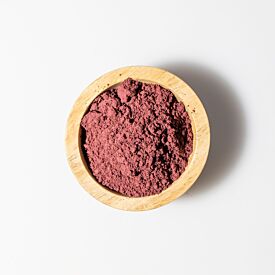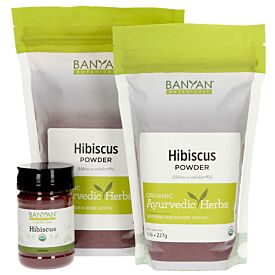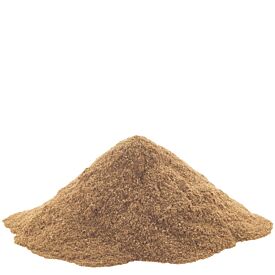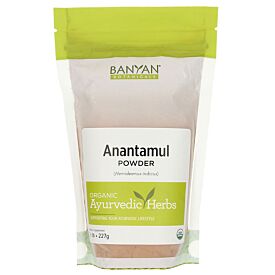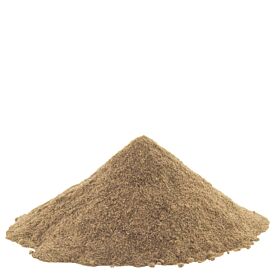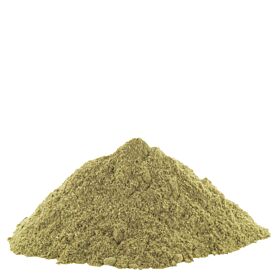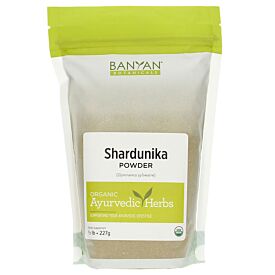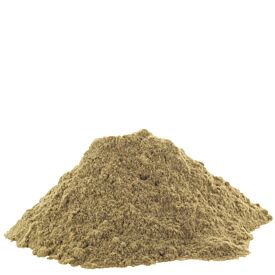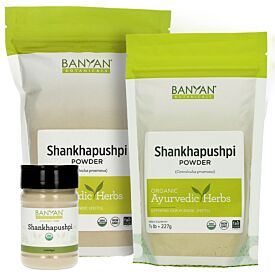Ten Little Known Ayurvedic Herbal Gems
Ayurveda is a huge collection of interrelated practices that oversee literally every aspect of a person’s health and lifestyle. Ayurveda places particular emphasis on the science of longevity, of course focusing on promoting good health throughout that lengthened life. Ancient Ayurvedic adherents observed and experimented with how people could be as happy and healthy as possible. Over many generations of patient, careful observation and systematic exploration, they recorded, in encyclopedic writings, what they found. They documented what worked and did not work regarding every aspect of living. These folks took the opportunity to closely observe people over very long periods of time—in extended families over generations, for example. Ayurveda teaches that in Vedic times, Ayurvedic physicians were sages and physicians—deeply devoted holy people who saw health as an integral part of spiritual life.
In Ayurveda, mind, body, and spirit are inextricably entwined, so Ayurveda looks to create a balance between body, mind, emotion, spirit, and environment. This is done by placing emphasis on the human body's ability to heal itself with the assistance and support of a variety of nontoxic therapies, including medicinal foods, dietary programs, and herbal remedies.
Along the line of herbal medicines, each plant remedy has possible benefits for the body, mind, and spirit, and even the names often reflect the metaphysical slant for any given plant. Ayurveda has been practiced for so long that there is a dazzling array of useful remedies. In fact, there are so many remedial possibilities that we often overlook some real gems. Just for a moment, let’s take the road less traveled and immerse ourselves in some jewels we usually find at the bottom of the treasure chest.
Ashoka
Ashoka bark (Saraca asoca), a bitter, cooling remedy, is a great example of a lesser known herb. At its simplest, it is a generic astringent herb that supports the body in keeping fluids from leaking out. Think postnasal drip. It is the go-to for pre-menstrual issues. Going beyond the usual, though, we find an outstanding remedy that tones the uterus, promotes regular menstruation, and supports healthy endometrial tissue. It’s the Swiss Army knife of herbs for female reproduction, finding a way to support the easing of menstrual cramps and period bleeding. Add to that its use in wound washing, and even the flowers make a tasty chutney. The name translates as “no sorrow,” a nod to its mood-lightening character.
Anantamul
Anantamul (Hemidesmus indicus) root is a bitter, cool, tridoshic herb that lowers pitta. This versatile root is a star detoxifier for the urinary tract and skin. Famous as a blood cleanser, it removes excess pitta from the body and mind. Its anti-inflammatory nature lends it to cooling the stomach, supporting healthy stools, and pumping up appetite. Add to the list supporting blood sugar balance, promoting healthy semen and normal menstrual bleeding, and it looks pretty impressive. Try mixing anantamul with nutmeg and aloe in a fine paste and applying it to pimples. Many people add this tasty herb to milk when consuming.
Bala
Bala (Sida cordifolia) is probably the most widely used rasayana tonic herb, after ashwaganda. The tridosha nature is rare in the herb world, so bala is widely applicable and, for that reason, quite worth noting. It is particularly tonic to vata. This is a sweet, cold, heavy herb that supports immune function. It is well tolerated by most patients.
Bala is soothing and mucilaginous, so it is particularly used for vata nerve issues. It contains a mild ephedrine-like compound. Currently Banyan markets bala for external use only because of 2004 ruling by the FDA concerning herbs that contain ephedrine alkaloids.
Boswellia
The boswellia (Boswellia serrata, Salai guggul) tree is a close relative of frankincense, myrrh, and the famous guggulu. A sticky gum resin exudes from the bark of this large branching tree that grows in semi-arid areas of South Asia, and it is this dried gum that is used in natural healing. Boswellia shares healing properties with all these close cousins. It is known to promote a healthy inflammatory response, support healthy cholesterol levels, and deeply detoxify the body’s tissues. Boswellia gum, in particular, has become well known in North America over the last decade for its pronounced effects on supporting joint health, which is its traditional Ayurvedic use.
This gum contains constituents, boswellic acids, which inhibit inflammation producing substances, leukotrienes, in the body. In fact, boswellia gum supports proper inflammatory response through several mechanisms. Scientific experiments showed that the herb was found to exhibit marked calming and analgesic effects. Boswellia has also been shown to reduce inflammatory processes in the digestive tract.
Kalmegh
Kalmegh leaf and root (Andrographis paniculata) is a very widely used herb in Ayurveda, but it is just now getting attention here in the U.S. Kalmegh is a wild annual shrub from the plains of Asia that is also cultivated in the gardens of north India. It's been a household remedy in Asia for many centuries. In Ayurveda, it is used for supporting upper respiratory health during seasonal stress. Its karma (action) is kaphapitta shamaka (it reduces vitiated kapha and pitta dosha). Also referred to by its latin name, andrographis, it is one of the coldest, most bitter herbs in the Ayurvedic pharmacopoeia. It is a stand-in for all such actions, including digestion, bile function, and stomach comfort.
Kutaja
Kutaja bark (Holarrhena antidysenterica) is an effective remedy for the kind of tummy stress that travelers experience, and the accompanying lower intestine discomfort. Kutaja is astringent, so it will support healthy stools and a comfortable gut.
Musta
Musta root (Cyperus rotundus) is a common perennial weed with medicinal underground tubers. Commonly called nutgrass, it is used across a wide swath of the globe, from southern Europe, across the Arabian Peninsula to China. Today, it grows all over India. The tubers primarily support the inflammatory response and a healthy flow of urine. Musta mainly treats prameha (urinary disorders), mainly apana vata vitiated varieties.
Since musta supports healthy blood pressure, it is found in cardiovascular formulas. Musta is a general tonic for women’s issues, and it is rich in minerals. Musta appears in many female formulas that promote balanced hormone levels. It promotes a healthy menstrual flow, especially for women prone to a scanty flow. To top it off, Charaka declares it the best digestive and carminative for promoting gastrointestinal absorption.
Hibiscus
Hibiscus flowers (Hibiscus rosa-sinensis) are used to destroy all life obstacles, spiritual and material, and to assist in realization of all goals. The name for this beautiful deep red herb is japa, because it strengthens devotion in meditation with a mantra (japa). These beautiful flowers are said to purify the physical and spiritual heart and promote wisdom.
A cooling herb, hibiscus makes a good beverage for reducing the effects of summer heat. It is astringent and sweet. In the body, hibiscus is a blood cleanser, and it is generally beneficial for kidneys and reproduction (first and second chakra disorders), especially those due to heat and congestion. Japa flowers nourish the skin and hair. Hibiscus has detoxifying actions in the body. It is used to improve the complexion and enhance normal hair growth. Ayurvedic practitioners use it to normalize menstruation.
Ayurveda says that hibiscus flower increases devotion, promotes wisdom, and aids in meditation. It also purifies the heart. For the physical heart, hibiscus normalizes blood pressure and has a protective effect on the heart itself. A growing collection of recent research shows that hibiscus protects the liver. New research is also underscoring the possibility of hibiscus in maintaining normal blood sugar.
Shardunika
Shardunika leaf (Gymnema sylvestre) is an exciting herb that is well known in Ayurvedic medicine, and it is just beginning to get serious attention here. It is particularly appropriate for American audiences because it represents a serious chance of supporting blood sugar balance. Gymnema sylvestre is a woody climbing plant that grows in the tropical forests of central and southern India. The leaves, when chewed, interfere with the ability to taste sweetness, which explains the Hindi name, gurmar, “destroyer of sugar.” Shardunika disables the tongue’s ability to taste sweet taste for about four hours when a leaf or a pinch of powder is chewed. Gurmar carries astringent and pungent tastes with a net heating effect. It is balancing to kapha and essentially neutral to pitta and vata.
Gymnema certainly could be the backbone of a natural blood sugar balance program. This herb has been used in India for the treatment of prameha (a syndrome described in the ancient Ayurvedic texts) for over 2,000 years. Used primarily for sustaining normal blood sugar in adults, it continues to perform like a champion for those who use it.
Shankhapushpi
Shankhapushpi herb (Convolvulus prostratus) is often used when we need mental peace and rest, and we may call upon it to help restore clear quality of the mind. Its flowers resemble the shankha or conch shell, thus the name. It usually is a foot-tall plant with a dome of flowers, found in open fields in north India.
This herb is an outstanding rejuvenative tonic for the mind and nerve tissue. The plant is said to have profound mystical properties with an affinity for the heart, throat, third eye, and crown chakras. Shankhapushpi is especially effective for supporting mental health and stable emotions. Often taken with or prepared in ghee, it promotes tranquility without dulling the mind. In depression, it uplifts. In mania, it is calming. Students may use it for exam phobia. To enhance attention, it combines well with brahmi and licorice. For supporting healthy sleep, take shankhapushpi at bedtime. According to the Astanga Hridyam, ghee, cooked three times with shankhapushpi juice and milk, makes even the dullest mind sharp.


